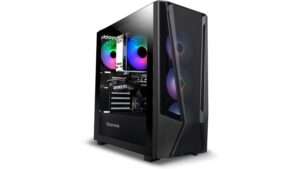
Best Internet Providers for Seamless Streaming and Gaming on Multiple Devices
If your household loves both streaming videos and online gaming, then you already know how important it is to have a reliable internet provider. The best internet providers for seamless streaming and gaming on multiple devices deliver consistent speed, low latency, and strong Wi-Fi coverage. In this guide, we’ll explore what makes an internet connection great for entertainment, how to choose wisely, and practical tips to make sure your family never has to argue over buffering screens or laggy gameplay.
What Makes an Internet Provider Good for Streaming and Gaming?
A good internet experience is not just about high download speeds. For multiple devices—whether it’s a smart TV, a gaming PC, or a few smartphones being used at the same time—you’ll need more than just raw speed. Let’s break it down:
- Speed (Bandwidth): Enough Mbps to handle Ultra HD streaming and simultaneous gaming.
- Low Latency: Ping response times are crucial for gaming performance.
- Upload Speeds: Important for live streaming and online multiplayer games.
- Consistency: No sudden drops in speed or frequent disconnections.
- Reliable Coverage: Strong Wi-Fi that reaches every room in your home.
Understanding Internet Speed Needs
Before choosing a provider, it’s smart to understand how much speed your household actually needs. Here are some general estimates:
| Activity | Minimum Speed |
|---|---|
| HD Video Streaming | 5 Mbps per device |
| 4K Ultra HD Streaming | 25 Mbps per device |
| Online Gaming | 3–6 Mbps (plus low latency) |
| Video Calls / Conferencing | 3–5 Mbps |
Streaming and Gaming Across Multiple Devices
When picking the best internet providers for seamless streaming and gaming on multiple devices, consider how your household actually uses the network. For example:
- If you often have two TVs streaming Netflix at the same time while someone plays an online RPG, your speeds will add up quickly.
- A single gamer may not need extreme bandwidth, but lag-free connections are essential—which depends more on latency and stability.
- Smart home devices, security cameras, and voice assistants also run in the background, increasing demand.
Why Wi-Fi Technology Matters
Even the best internet plan can feel slow if your Wi-Fi router can’t distribute the connection effectively. Routers with the latest Wi-Fi standards like Wi-Fi 6E significantly improve efficiency, latency, and device capacity. Mesh Wi-Fi systems also help in larger homes by spreading coverage more evenly across multiple access points.
Tips for Seamless Streaming and Gaming
1. Prioritize Ethernet Connections When Possible
For gaming consoles or desktop PCs, a wired Ethernet connection is always the most stable option. This reduces latency and eliminates potential Wi-Fi interference.
2. Use Dual-Band or Tri-Band Routers
By separating devices onto different frequency bands (2.4 GHz for light tasks and 5 GHz or 6 GHz for high-performance activities), you improve overall stability. Many modern routers automatically manage this, but you can manually assign devices if needed.
3. Limit Background Bandwidth Use
Large software downloads or cloud backups can clog up bandwidth. Try scheduling those outside of gaming or streaming hours.
4. Optimize Streaming Devices
- Smart TVs and streaming boxes should connect directly to faster bands.
- Enable any “Quality of Service (QoS)” or traffic prioritization options available in your router settings to ensure gaming consoles always have the lowest latency.
Common Issues to Watch Out For
- Buffering: Caused by insufficient speeds or unstable Wi-Fi signal.
- Lag Spikes: Often related to high latency or network congestion.
- Dead Zones: Areas in the home where Wi-Fi signals drop completely.
- Device Overload: Too many devices can saturate the bandwidth, especially if you’re using an older router.
How to Improve Wi-Fi Coverage
If you already have an internet plan that should be good enough but you’re still experiencing problems, improving your home network setup could help:
- Position your router in a central location, away from thick walls and interference from appliances.
- Upgrade to a mesh Wi-Fi system for large or multi-story homes.
- Disable unused devices consuming bandwidth in the background.
Balancing Gaming and Streaming Needs
Gamers often prioritize low latency, while streamers focus on high speeds and stability. In homes where both happen simultaneously, here’s how to balance:
- Choose internet plans with higher upload speeds since games and live streaming benefit most.
- Test latency using built-in tools on gaming consoles and adjust connection methods accordingly.
- If your internet provider’s equipment is outdated, consider buying your own high-quality router.
Community Insights: What People Recommend
When in doubt, it helps to see what real users have to say. Many gamers on Reddit discussions emphasize that consistent latency is more valuable than extreme download speeds. Streamers on Quora also recommend using wired connections for critical devices while leaving Wi-Fi for casual browsing and smart home gadgets.
Checklist for Choosing Your Best Provider
- Check what internet speeds are offered in your area.
- Pick a plan with a balance of download and upload speeds.
- Look for a provider with no strict data caps if your household streams a lot.
- Review latency and jitter performance for gaming reliability.
- Ensure equipment provided (or your own) supports modern Wi-Fi standards.
Final Thoughts
Finding the best internet providers for seamless streaming and gaming on multiple devices doesn’t have to be overwhelming. What matters most is ensuring you have a combination of strong bandwidth, low latency, good equipment, and proper Wi-Fi coverage. With the right setup, your family can enjoy endless streaming binges and smooth gaming nights without interruptions.
Written by admin
Content writer and tech enthusiast sharing insights on internet connectivity.



